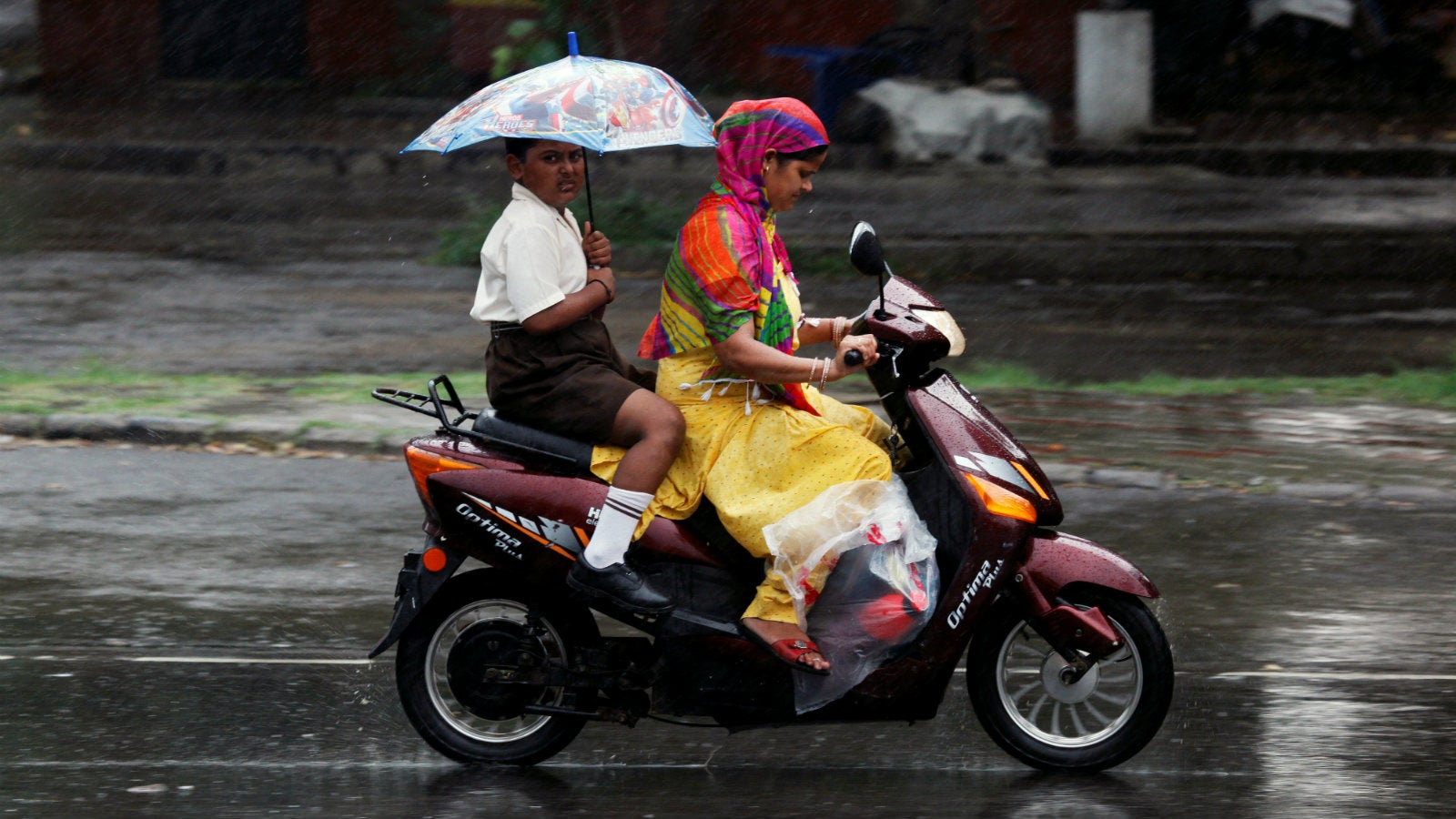Vietnam has some lessons for India on how to get bikers to actually wear their helmets
There is something about Indian two-wheeler riders and their helmets.


There is something about Indian two-wheeler riders and their helmets.
Even when headgear is a constant companion, it often doesn’t serve its purpose. Because, instead of wearing helmets where they are supposed to be worn, bikers sling them on their arms, hang them on rear-view mirrors, or simply tuck them under the seats—pulling them out only when cops are around.
The law (the Motor Vehicles Act of 1988 makes the wearing of “protective headgear” mandatory), increased fines, and the government’s awareness campaigns seem to have done little to improve compliance.
So two-wheeler accidents and fatalities have been steadily increasing. In 2016 alone, the road transport ministry recorded (pdf) 162,280 accidents involving two-wheelers, in which as many as 44,366 people were killed. Riders also accounted for the largest share of total road accident fatalities that year at nearly 34%. Of these, over 10,000 died simply because they weren’t wearing helmets.
Vietnam, another nation with a sizable number of two-wheeler riders, could offer some lessons in this regard.
After December 2007, when the southeast Asian nation made wearing of helmets mandatory, their use by bikers surged from around 30% to over 95%, according to a case study by Andrew Flamang of The Bridgespan Group, a Boston-based non-profit focused on issues such as public health and global development. This was the result of a combination of factors: an effort to develop hard evidence, introduction of better, climate-appropriate helmets, and a concentrated awareness campaign.
Here’s how Vietnam made it work.
Define the problem
Throughout the 1990s, the country recorded a high annual rate of two-wheeler accidents. In 2001, the government tasked the Hanoi School of Public Health with conducting the first-ever national household survey to establish the effects of these accidents. With a sample of 46,000 people, the survey revealed that serious head and brain injuries were widely prevalent, and thousands of people had lost their lives.
“Early shoestring research and a subsequent nationwide household injury survey led by the Hanoi School of Public Health demonstrated the seriousness of the problem,” Flamang writes. “Although the (Vietnamese) government ‘initially balked’ at the findings, they would later use the results of these studies in developing the mandatory helmet law.”
In India, meanwhile, it’s unlikely that the average citizen is aware that over 44,000 people lost their lives in motorcycle accidents last year. Along with the road safety videos being played in movie theatres and the hoardings featuring grim accident-related photographs, collecting and promoting househeld-level data could help spread the message in India that riding without a helmet is a terrible idea.
Localise the solution
So why don’t Indians wear helmets?
On Quora, this question has elicited responses blaming everything from the cost to hair loss to general discomfort to even a superman complex that makes people believe they are invincible. However, there’s no doubt that in India’s hot and humid weather, helmets can be stifling enough to put people off—just like in Vietnam.
However, in 2002, the Asia Injury Prevention Foundation, a Vietnamese non-profit, designed a lighter and more comfortable helmet suitable for that country’s tropical climate. (It later established a manufacturing facility in Hanoi to mass-produce it, Flamang says.) Since then, helmets have become a bit of a fashion statement in Vietnam, with locals even stocking up on various colours.
An Indian government panel, too, has noted the dire need for less bulky and better ventilated helmets. Many of the options available today are unappealing and of inferior quality. So localising them, taking into account users’ concerns, will help, Soumitra Pandey, partner and Mumbai office head at The Bridgespan Group, said in an email.
Make it a priority
While there are reassuring signs that India is finally taking road safety seriously at the central and state government levels, the problem will clearly need all the firepower available. In Vietnam, the authorities played a critical role in propelling behavioural change, Flamang says. It took immense political will, with every branch of the government focusing resources on the issue to improve the implementation of existing laws, impose fines when required, and make sure every citizen was made aware of the rules.
Over the years, the Indian government has made similar efforts to promote the adoption of iodized salt and combat polio. Increasing helmet usage will require that kind of sustained commitment once again.